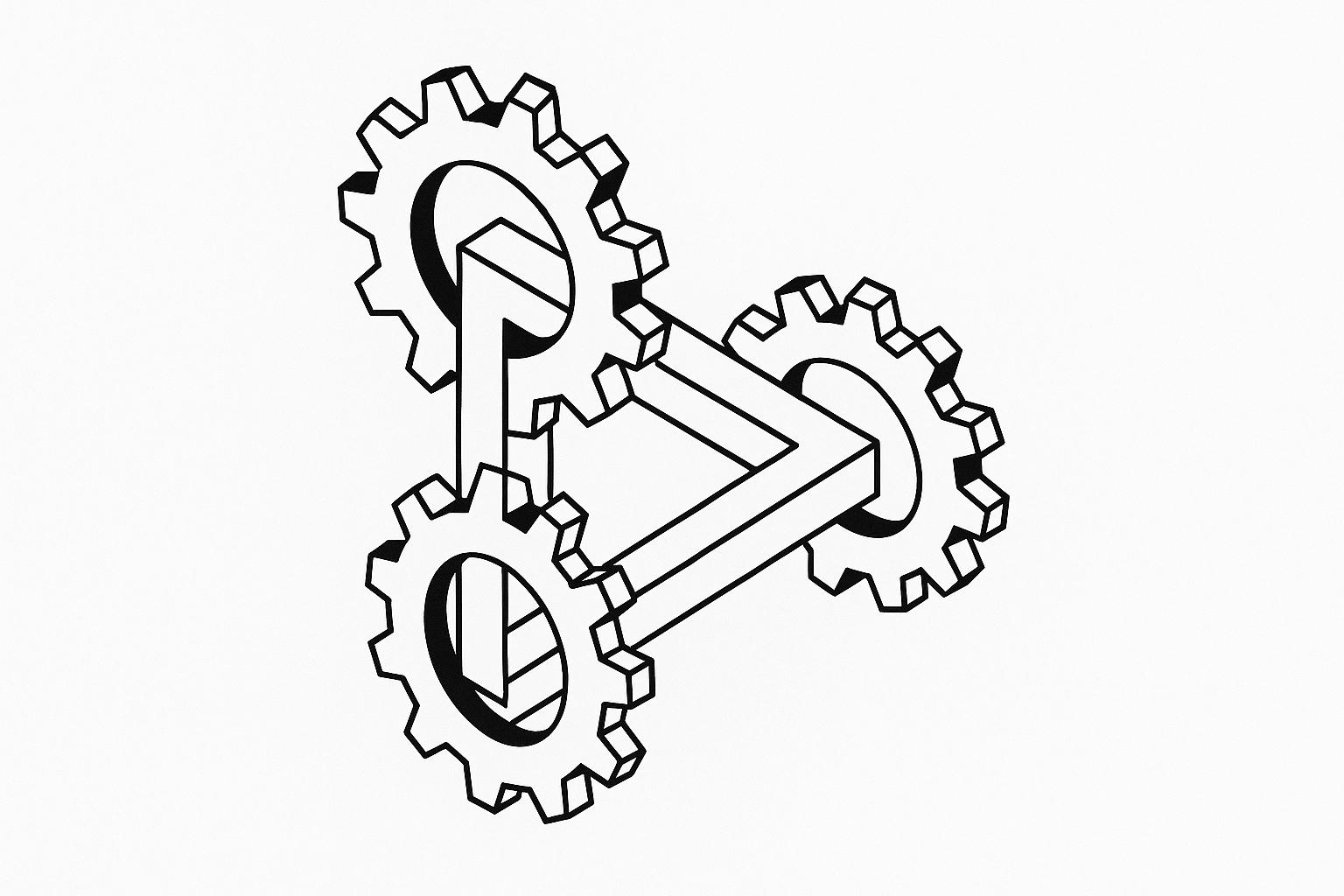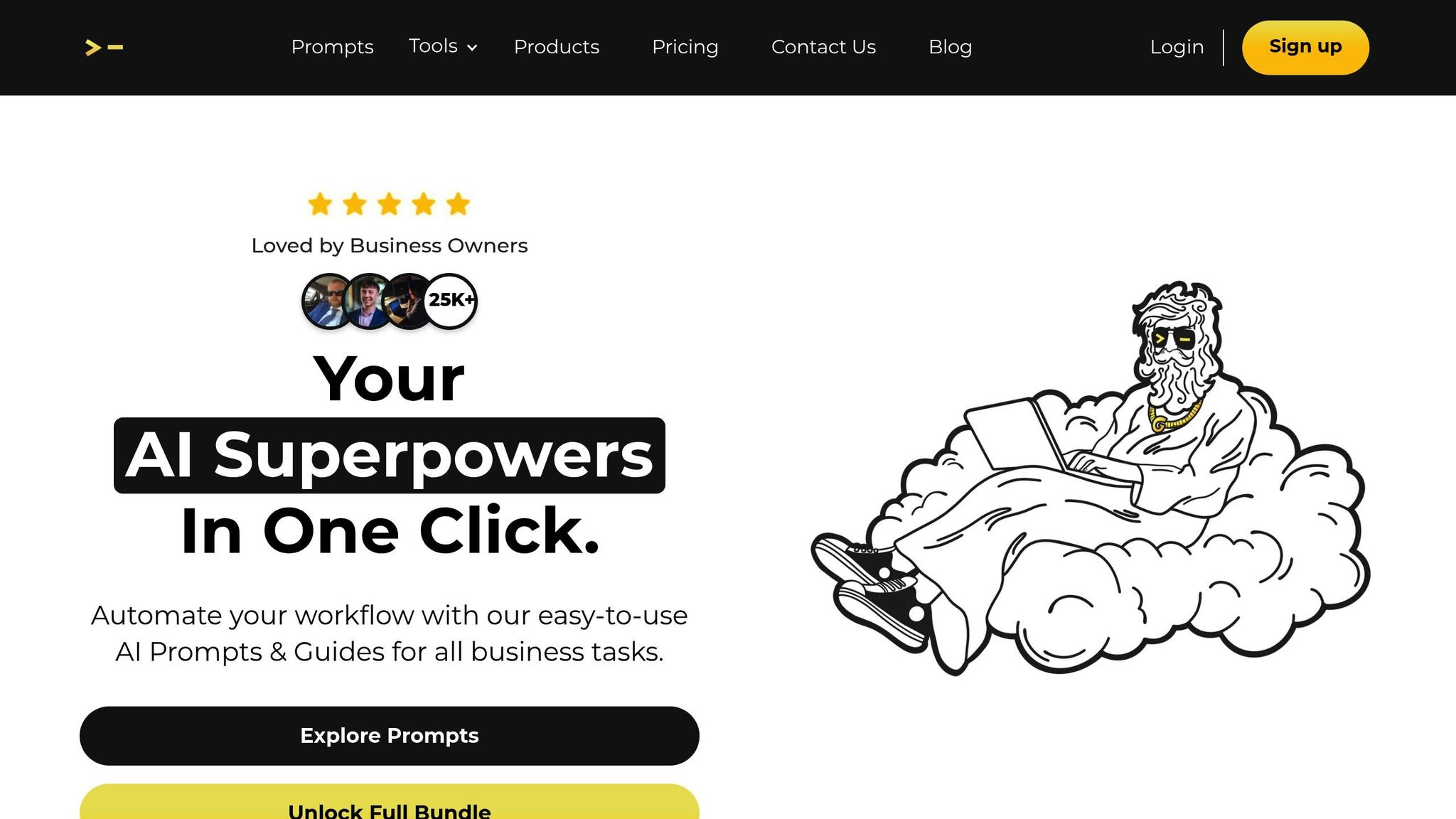
AI workflow automation can save time and boost efficiency, but is it worth the cost? Here's a breakdown:
Key takeaway: If you're a small business or need fast results, prompt-based tools like God of Prompt might be the better fit. For larger, more intricate needs, traditional AI tools could be worth the investment.
Quick Comparison:
| Feature | Traditional AI Tools | God of Prompt |
|---|---|---|
| Cost Structure | Subscription fees + setup | One-time purchase bundles |
| Ease of Use | Requires IT support | User-friendly with guides |
| Complexity | Handles intricate workflows | Best for simpler workflows |
| Pricing Range | High | $27–$150 |
To succeed, focus on leadership involvement, choosing the right tools for your needs, and training your team.
AI workflow automation tools come with more than just licensing fees. Many platforms follow subscription-based pricing, which means costs can add up over time. This section lays the groundwork for understanding the broader cost factors and potential return on investment (ROI).
When adopting AI tools, the total cost involves much more than the subscription fee. Companies need to account for implementation, system integration, and data management expenses. Other key expenses include IT support, employee training, and ensuring proper data governance. A strong, well-maintained data infrastructure is essential to ensure the accuracy and performance of these tools, which ultimately impacts ROI as well.
The value of AI automation goes far beyond just cutting costs. While labor savings are an obvious benefit, companies also gain from increased operational efficiency and better customer experiences. These improvements collectively boost the overall ROI. By zeroing in on specific AI applications, businesses can unlock value that far outweighs the upfront investment. These performance gains highlight why AI automation is a worthwhile investment.

God of Prompt takes a different approach to pricing by offering one-time purchase bundles, eliminating the hassle of monthly subscription fees. This structure makes it easier for businesses to manage costs while benefiting from a flexible pricing model.
The platform's freemium option lets companies test the waters without any upfront investment. The free plan includes over 1,000 ChatGPT prompts, 100+ Midjourney prompts, and essential guides. These resources showcase how AI-driven prompts can boost workflow efficiency.
God of Prompt offers bundles priced between $27.00 and $150.00, catering to a range of needs. For example:
With a lifetime access model, users benefit from ongoing updates and a 7-day risk-free guarantee, making it easier to plan budgets without worrying about recurring fees. The transparent pricing also helps businesses measure ROI quickly, especially when using the bundles for specialized tasks.
God of Prompt focuses on prompt engineering, offering bundles designed for specific workflows like marketing, SEO, productivity, and no-code automation. These targeted solutions address real-world challenges. For instance:
These bundles ensure teams can hit the ground running, saving time and resources while improving workflow outcomes.
The platform’s user-friendly design and detailed guides make it simple to implement without requiring extensive IT support or training, keeping costs low and adoption smooth.
When deciding between traditional AI tools and prompt-based solutions, it's important to weigh the benefits and challenges of each approach. Traditional AI tools often come with steep upfront costs, lengthy implementation timelines, and the need for dedicated support. They are well-suited for handling complex workflows but may be out of reach for smaller businesses due to their resource demands.
On the other hand, prompt-based solutions, like God of Prompt, offer a more accessible and flexible alternative. These tools feature a simplified purchasing process and quick deployment, making it easier for businesses to adopt AI automation without breaking the bank. They provide predictable costs and lower entry barriers, allowing teams to experiment with AI-driven efficiencies without the extensive overhead that traditional tools typically require.
However, prompt-based solutions aren't without their drawbacks. They may struggle to address highly complex workflows that require deep customization or intricate system integration. While the learning curve for prompt engineering is generally easier than full-scale programming, some training is still necessary to unlock their full potential.
Ultimately, the choice between these two approaches boils down to a cost vs. ROI analysis. Businesses need to evaluate their specific workflow needs and resources to decide whether the advanced capabilities of traditional tools or the affordability and agility of prompt-based solutions align better with their goals.
When weighing the cost against the ROI of AI workflow automation, it’s clear that a well-thought-out strategy can turn upfront expenses into substantial long-term benefits.
Traditional AI tools are great for handling complex workflows but often come with hefty initial costs. On the other hand, prompt-based solutions like God of Prompt offer a more accessible alternative with predictable pricing, making them ideal for quick and efficient automation.
However, success depends on more than just the tools. Organizational readiness plays a critical role. Research shows that only 1% of companies have reached maturity in AI implementation, exposing a significant gap between aspirations and actual execution. A major hurdle? Leaders often fail to drive the cultural and operational changes needed to scale AI effectively.
For U.S. businesses exploring AI workflow automation, three key factors emerge as essential for achieving meaningful ROI:
When choosing between traditional AI tools and prompt-based solutions, it's important to weigh factors like task complexity, adaptability, and budget.
Traditional AI tools excel at managing intricate, evolving tasks that demand real-time learning or sophisticated decision-making. That said, they typically come with a heftier price tag and require significant resources to set up and maintain.
On the flip side, prompt-based solutions are perfect for automating simpler, rule-driven processes. They tend to be more budget-friendly, faster to implement, and highly effective for straightforward tasks. Ultimately, the best option for you will hinge on how complex your workflows are, how much flexibility you need, and what your financial limits look like.
To truly gauge the ROI of AI workflow automation, businesses need to look beyond just cost savings. It’s essential to consider both measurable outcomes and less obvious advantages. Metrics like better decision-making, higher customer satisfaction, quicker workflows, and stronger operational resilience are key indicators. Together, these elements drive long-term value by enhancing productivity, increasing revenue, and lowering risks.
Another important factor is how AI automation impacts employee growth and engagement. By taking repetitive tasks off their plates, teams can dedicate their energy to more strategic, high-impact work. Over time, this shift doesn’t just improve efficiency - it also sparks innovation and elevates the organization as a whole.
To make AI workflow automation a success and get the best return on investment (ROI), businesses should first pinpoint processes that stand to gain the most from automation. Look for workflows where AI can save time, cut costs, or boost accuracy, and set clear, measurable goals to track progress.
Start small by running pilot projects to test your AI tools in action. These initial tests can provide valuable insights, helping you fine-tune your approach before rolling it out on a larger scale. Keep a close eye on performance and be ready to tweak your strategy to improve results over time.
It's also crucial to create an environment that supports innovation. Invest in employee training and involve key stakeholders at every stage of the process. Building a skilled team and fostering collaboration will make the transition smoother and help unlock the full potential of automation.





